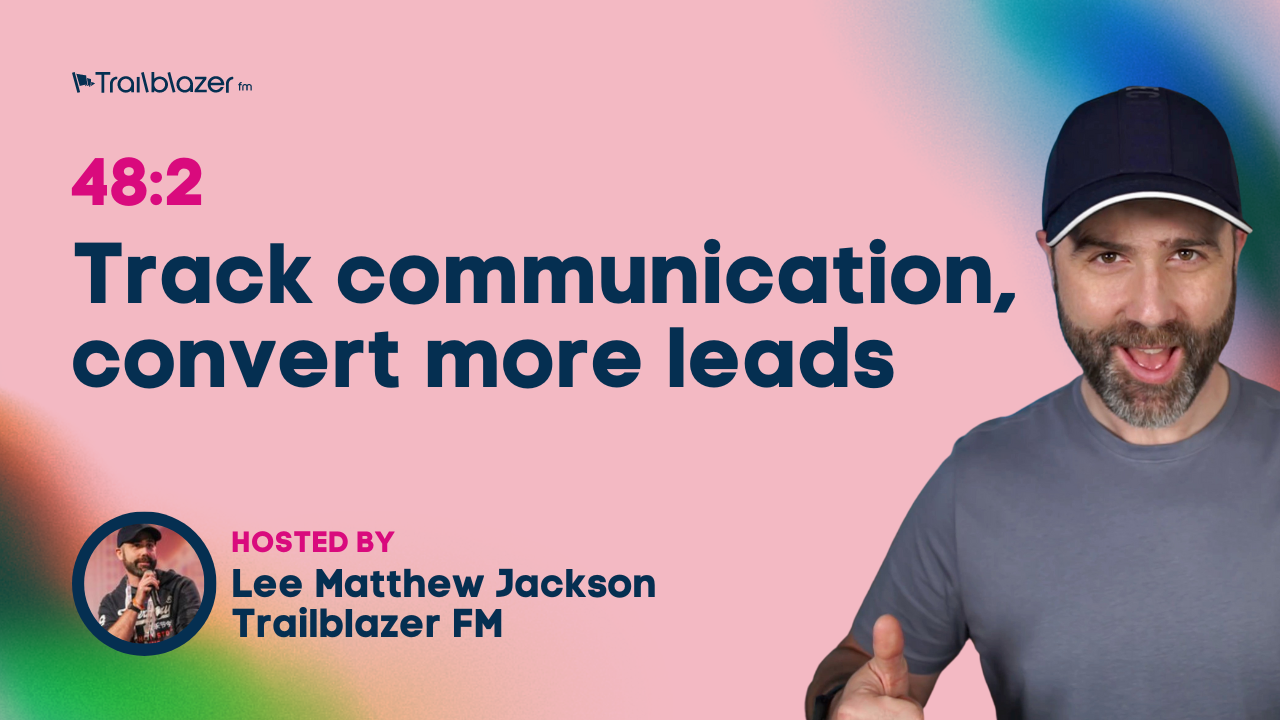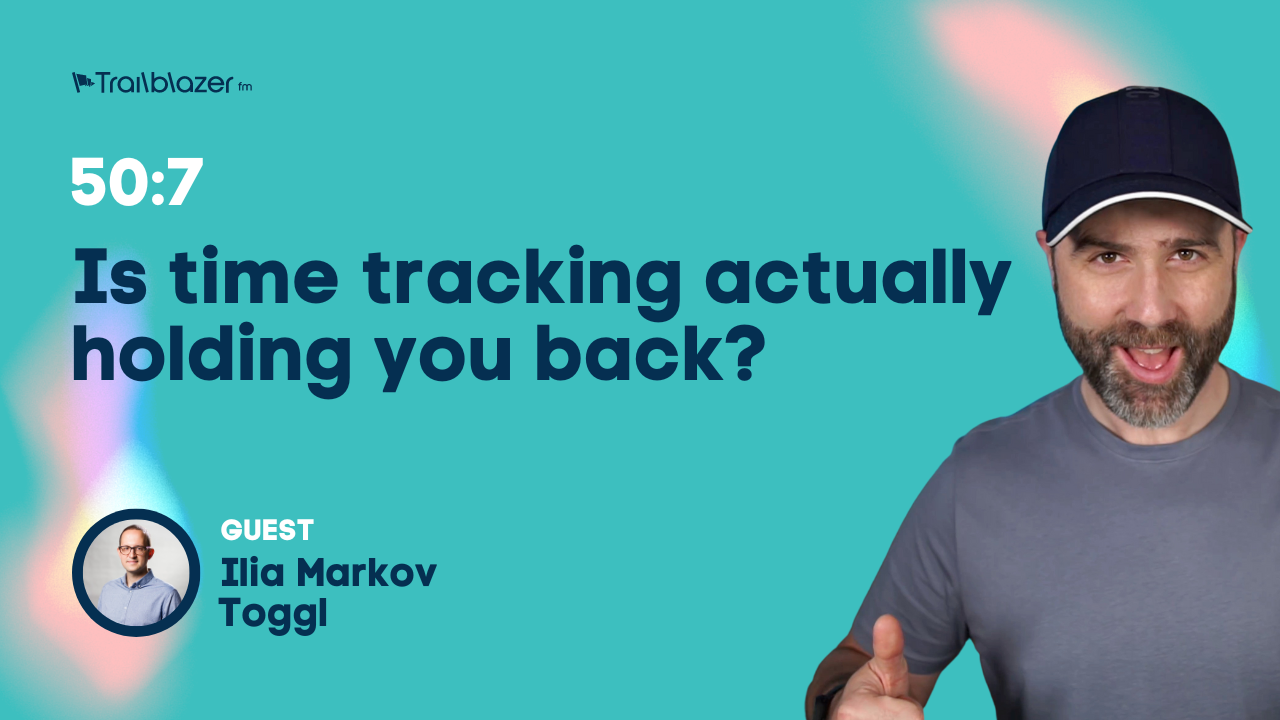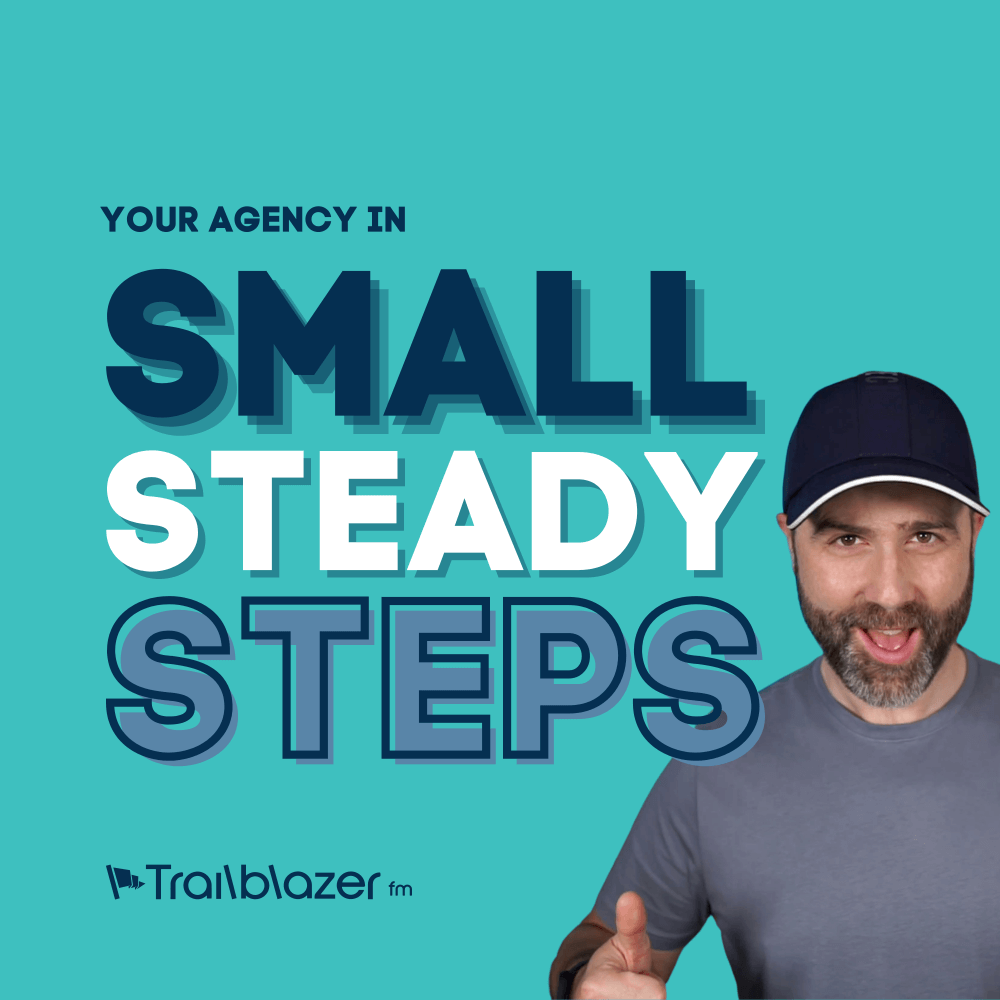
48:2 Track communication, convert more leads
Learn how to track your communications and convert more leads in your web agency.
Have you ever been excited to receive a new lead in your inbox, only for the communication to fizzle out over time? As a web agency owner, this can be a frustrating experience. In this episode, Lee shares his agency's solution to this problem. By implementing a simple process using a CRM, they were able to track their communications and convert more leads.

The process
It's simple but it works. Here is the process Lee describes:
- Step 1: Record the inquiry in your CRM and add it as an opportunity.
- Step 2: Assign a follow-up task to someone with a date to ensure progress.
- Step 3: Use lead stages such as prospecting, qualification, needs analysis, proposal, negotiation, and closing.
- Step 4: Implement an opportunity aging rule to notify senior management of stagnant opportunities.
- Step 5: Follow up even after closing a deal to continue building relationships with clients.
Key takeaways
Some food for thought. Let us know your takeaways in the comments below.
- Use a CRM to track inquiries and progress through the lead stages
- Implement a simple process and workflow to streamline lead conversion
- Use accountability and automation to ensure the process is adhered to
- Develop ongoing relationships with clients and non-clients
- Don't overcomplicate things - simplicity is often the key to success.
CRM options
Lee's team has been using HubSpot for some time. What do you use? Here are some other options.
- HubSpot CRM - https://www.hubspot.com/products/crm
- Salesforce CRM - https://www.salesforce.com/products/sales-cloud/sales-crm/
- Zoho CRM - https://www.zoho.com/crm/
- Pipedrive - https://www.pipedrive.com/
- Agile CRM - https://www.agilecrm.com/
- Freshsales - https://www.freshworks.com/freshsales-crm/
- Copper CRM - https://www.copper.com/
- Capsule CRM - https://capsulecrm.com/
- Insightly - https://www.insightly.com/
- Less Annoying CRM - https://www.lessannoyingcrm.com/
Transcript
Welcome to the Trailblazer FM podcast. This is your host, Lee. And in today's show, we're going to look at tracking your communications so you can convert more leads.
Let's go ahead and set the scene. You've received a new inquiry in your inbox. You are very excited. This is great! An incoming lead. You reply with perhaps a few questions and maybe you jump on a call. However, over time, maybe over the course of a week or two, communications begin to fizzle out. Maybe you get busy with other projects, you forget to respond to something, or you respond in haste and eventually the lead just fizzles away. Perhaps you do get as far as sending a proposal, but again, that proposal also falls flat and you are back looking for new leads to come in, so you can try and convert those whilst still, of course, servicing all of your existing clients.
Now, what I've just described there is essentially what agency life was like for us about a decade or more now ago. Holy moly, I'm getting old. This is ridiculous, isn't it? It's probably about 15 years ago. It's exactly how we would operate.
And a lot changed when we decided to essentially set up a simple process to manage inquiries that came in. I'm going to share with you in this episode exactly how we manage our inquiries as they come in and how we take them through the entire process to either winning the business or having a friendly handshake and a goodbye.
There are two things you're going to need for this. Number one is the bulleted list for a process. You'll be able to see them in the show notes. And the second is some form of CRM that will allow you to track your progress with a potential client and assign tasks to people within your organization. That's those two simple things that you need.
One, an understanding of the process. Two, some software that will enable that workflow. Again, check out the show notes. There are a list of potential CRMs that you could use to help with this process.
So first of all, let me share with you our process.
First of all, the inquiry comes in whether that is through a telephone call, through an email, or at a networking meeting. However it is, we will record that inquiry, that lead, that opportunity in our CRM. We will add that in as an opportunity.
Next, we will assign a task to that opportunity. There should always be an open task against an opportunity that is assigned to someone with a date.
Within the CRM, we also then have our lead stages and we will start off with the lead prospect stage. That's the very, very beginning. We've had our inquiry, we've created our opportunity, we've set it as a lead prospect stage, (that's the very beginning) and we've created our follow up task for somebody to own that opportunity, to take it on through all of those stages.
This part of the process is essentially a loop. If you're a developer, you'll know exactly what I mean. But you're essentially going round and round until you get to the end of that loop. So for us, we will start off at the lead prospect stage, we will then try and qualify the lead, we will then try and get some discovery under the hood so we can understand what is they need, we'll then position a proposal, we will then negotiate on that proposal if need be, and then we will either close win or close lose that particular opportunity.
As an extra layer, we also have an opportunity ageing rule, which means that if an opportunity has gone on for more than, say, two weeks, somebody in senior management will be notified so that they can check in, especially if there has been no activity on that particular opportunity.
So to reiterate, the inquiry comes in, the opportunity goes on to the CRM, we have follow up tasks to take us through those stages. We eventually get through to the close win or the close lose stage, and then we hand off to project management if it's going to be an actual won project.
So it's not rocket science. What is the enabler, however, is that CRM, and that's why it's so important that we track what we're doing. We were initially just sending emails and copying each other in and then just hoping that somebody was going to own it and take it on to the next stage. And hey, people get busy, people forget things, and things would eventually fizzle out.
We did try for a while tracking with spreadsheets. We did try having regular stand up meetings as well with the sales team to ensure that things carried on, but nothing quite worked so well when we opened up a CRM and ensured that our very, very simple, very basic process flow was adhered to in a CRM with some form of simple automation.
I think so often as agency owners, we are tech heads. We love amazing technical solutions and we look beyond just basic simple principles of information management, and we look to these whiz bang tools that we feel like are going to help us convert our leads even better, and we're going to grow our businesses, and this is going to put our revenue on fire or whatever people say. But quite frankly, this very simple process has worked and enabled us to turn over hundreds of thousands of pounds as an agency. It's also something that I learned in businesses that were turning over tens of millions of pounds. I used to be in IT and we implemented this exact process years ago back in the early noughties. We were backed by a product called Salesforce, which you'll all know and love, which was still incredibly powerful even at that early stage.
We don't need to get complicated. We don't need fancy automation. We don't need AI. We don't need multiple meetings. We don't need managers breathing down our necks or idle threats. We just simply need a simple process and some simple product that will enable us to enact out on that workflow.
So I mentioned earlier that loop, and we have some stages in that loop. We've got the lead or the prospect, we've got qualifications, we've got needs analysis, we have the proposal, we have the negotiation, and then we have the closing. We also have a seventh stage, which is ongoing, which is the follow up stage where we ensure after closing a deal that we will continue to connect with our customer and build the relationship. But equally, even with people who have not gone with us at that time, we still want to ensure that we continue to follow up with them and develop a relationship. They don't have to be a client for us to develop an ongoing relationship with because let's not write everybody off.
Again, these are listed in the show notes, but let me just quickly give you our version of each.
For the lead or the prospecting, this is essentially when someone has expressed an interest in our product or service of ours and we've not yet made contact with them. So we just know that this is about to happen. So we have put that in our system as an opportunity.
We then have the qualification stage. So this is when we've connected with them to really determine whether we're a good fit for them or they're a good fit for us, etc. We'll maybe assess their budget or timeline, that stuff.
We'll then move on to needs analysis or discovery. This is where we're really going to get under the hood with them on what they want to achieve, what the blockers are to those aspirations, and also what it is we might be able to deliver for them so that they can achieve those goals.
Once we've gone through that process, we will then develop a proposal for them to consider. That's the proposal stage.
We have the negotiation stage where we might be addressing any concerns they have or making some adjustments to our proposal. Maybe we've misunderstood something, maybe there are budget constraints and we need to take something off. We would term that as the negotiation phase.
And then we have the final close, that is whether they agree to go ahead or whether they agree to not go ahead. I'll leave that in. You get it, whether we win or whether we lose. And of course, then we have that follow up stage.
So these are our stages. You can take them off the website and put them in your CRM of choice. Also on our website is that list of potential CRM solutions that you can use.
We use HubSpot. You are free to use whatever you wish.
So no surprises there. Simple processes really do help you move the needle in your agency. I'm going to carry on with these shorter episodes where we just look at a very small part of workflow processes for agencies. When we change small things within our business, big results can really happen. We do overcomplicate things so much. Just as humans, it's our natural nature to assume that the answer to our problems is a complicated solution when in most circumstances it's just simplicity.
Simplicity with a little bit of that automation within the CRM which gives the accountability and that helps a simple plan be carried out by a small team.
I've tried to lay out the show notes so that it would be easy to consume and easy to then go ahead and do what you need to do within your agency, but do please let me know in the comments. Just take a look at the show notes, click on the link to our website and join us in the comments. What's your biggest take away from this? What would you do differently? What are your stages and what software do you use if you use any software to track your leads and convert projects?
Now then, before I wrap up, can I encourage you to please share this episode if you have had value. Perhaps share it via email with some friends or share it online through social media. It's probably one of the only ways we're going to get to promote this show. Like I said in the previous episode, I've taken a massive step back from social media for my own sanity, and we do have some basic channels which will be broadcast channels only to share updates just like a newsfeed, but we're not doing any particular drive towards massive social media campaigns to promote this show.
Anything you can do would be greatly appreciated to help us continue for another eight plus years. Yes, we're over eight years old. Isn't that ridiculous? All right, folks, if we don't see you in the comments, then, hey, let's see you in the next episode.








